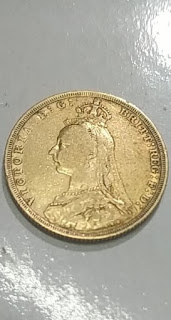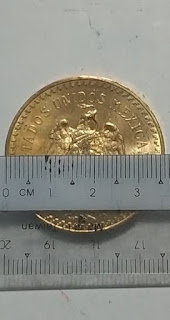Gold standard[edit]
This section needs additional citations for verification. (April 2019) (Learn how and when to remove this template message)
|
Note: all references to 'ounce' in this section are to the troy ounce as used for precious metals, rather than to the (smaller) avoirdupois ounce used in the United States customary units system for other goods.
Bimetallism persisted until March 14, 1900, with the passage of the Gold Standard Act,[10] which provided that:
Thus the United States moved to a gold standard, making both gold and silver the legal-tender coinage of the United States, and guaranteed the dollar as convertible to 25.8 grains (1.672 grams, 0.05375 troy ounces) of gold, or a little over $18.60 per ounce.
The gold standard was suspended twice during World War I, once fully and then for foreign exchange. At the onset of the war, U.S. corporations had large debts payable to European entities who began liquidating their debts in gold.[citation needed] With debts to Europe falling due, the dollar to (British) pound sterling exchange rate reached as high as $6.75:£1,[when?] far above the nominal (gold) parity of 4.8665:1. This caused large gold outflows until July 31, 1914, when the New York Stock Exchange closed and the gold standard was temporarily suspended. In order to defend the exchange rate of the dollar, the US Treasury Department authorized state and nationally chartered banks to issue emergency currency under the Aldrich-Vreeland Act, and the newly created Federal Reserve organized a fund to assure debts to foreign creditors. These efforts were largely successful, and the Aldrich-Vreeland notes were retired starting in November and the gold standard was restored when the New York Stock Exchange re-opened in December 1914.[11]
For as long as the United States remained neutral in the war, it remained the only country to maintain its gold standard, doing so without restriction on import or export of gold from 1915 to 1917. When the United States became a belligerent in the war, President Wilson banned gold export,[citation needed] thereby suspending the gold standard for foreign exchange. After the war, European countries slowly returned to their gold standards, though in somewhat altered form.[11][12]
During the Great Depression, every major currency abandoned the gold standard. Among the earliest, the Bank of England abandoned the gold standard in 1931 as speculators demanded gold in exchange for currency notes or in settlement of debts,[citation needed] threatening the solvency of the British monetary system.[citation needed] This pattern repeated throughout Europe and North America. In the United States, the Federal Reserve was forced to raise interest rates in order to protect the gold standard for the US dollar, worsening already severe domestic economic pressures. After bank runs became more pronounced in early 1933, people began to hoard gold coins as distrust for banks led to distrust for paper money, worsening deflation and depleting gold reserves.[11][12]
The Gold Reserve Act[edit]
In early 1933, in order to fight severe deflation, Congress and President Roosevelt implemented a series of Acts of Congress and Executive Orders which suspended the gold standard except for foreign exchange, revoked gold as universal legal tender for debts, and banned private ownership of significant amounts of gold coin. These acts included Executive Order 6073, the Emergency Banking Act, Executive Order 6102, Executive Order 6111, the Agricultural Adjustment Act, 1933 Banking Act, House Joint Resolution 192, and later the Gold Reserve Act.[11] These actions were upheld by the U.S. Supreme Court in the "Gold Clause Cases" in 1935.[13]
For foreign exchange purposes, the set $20.67 per ounce[citation needed] value of the dollar was lifted,[when?] allowing the dollar to float freely in foreign exchange markets with no set value in gold.[citation needed] This was terminated after one year. Roosevelt attempted first to restabilize falling prices with the Agricultural Adjustment Act; however, this did not prove popular, so instead the next politically popular option was to devalue the dollar on foreign exchange markets. Under the Gold Reserve Act the price of gold was fixed at $35 per ounce, making the dollar more attractive for foreign buyers[citation needed] (and making foreign currencies more expensive for those holding dollars). This change led to more conversion of gold into dollars, allowing the U.S. to effectively corner the world gold market.[14][15]
The suspension of the gold standard was considered temporary by many in markets and in the government at the time, but restoring the standard was considered a low priority to dealing with other issues.[11][14]
Under the post-World War II Bretton Woods system, all other currencies were valued in terms of U.S. dollars and were thus indirectly linked to the gold standard. The need for the U.S. government to maintain both a $35 per troy ounce (112.53 cents/gram) market price of gold and also the conversion to foreign currencies caused economic and trade pressures.[citation needed] By the early 1960s, compensation for these pressures started to become too complicated to manage.[citation needed]
In March 1968, the effort to control the private market price of gold was abandoned. A two-tier system began. In this system all central-bank transactions in gold were insulated from the free market price. Central banks would trade gold among themselves at $35/ounce (112.53 ¢/g) but would not trade with the private market. The private market could trade at the equilibrium market price and there would be no official intervention. The price immediately jumped to $43/ounce (138.25 ¢/g).[citation needed] The price of gold touched briefly back at $35/ounce (112.53 ¢/g) near the end of 1969 before beginning a steady price increase.[citation needed] This gold price increase turned steep through 1972 and hit a high that year of over $70/ounce (2.25 $/g). By that time floating exchange rates had also begun to emerge, which indicated the de facto dissolution of the Bretton Woods system. The two-tier system was abandoned in November 1973. By then the price of gold had reached $100/ounce (3.22 $/g).[citation needed]
In the early 1970s, inflation caused by rising prices for imported commodities, especially oil, and spending on the Vietnam War that was not counteracted by cuts in other government expenditures, combined with a trade deficit to create a situation in which the dollar was worth less than the gold used to back it.[clarification needed]
In 1971, President Richard Nixon unilaterally ordered the cancellation of the direct convertibility of the United States dollar to gold. This act was known as the Nixon Shock.
U.S. dollar value vs. gold value[edit]
The sudden jump in the price of gold after the demise of the Bretton Woods accords was a result of the significant prior debasement of the US dollar due to excessive inflation of the monetary supply via central bank (Federal Reserve) coordinated fractional reserve banking under the Bretton Woods partial gold standard. In the absence of an international mechanism tying the dollar to gold via fixed exchange rates, the dollar became a pure fiat currency and as such fell to its free market exchange price versus gold. Consequently, the price of gold rose from $35/ounce (1.125 $/g) in 1969 to almost $500 (29 $/g) in 1980.
Shortly after the dollar price of gold started its ascent in the early 1970s, the price of other commodities such as oil also began to rise. While commodity prices became more volatile, the average price of oil as expressed in gold (or vice versa) remained much the same in the 1990s as it had been in the 1960s, 1970s and 1980s.[citation needed]
Fearing the emergence of a gold-based economy separate from central banking,[citation needed] and with the corresponding threat of the collapse of the U.S. dollar,[citation needed] the U.S. government approved several changes to the trading on the COMEX. These changes resulted in a steep decline in the traded price of precious metals from the early 1980s onward.[citation needed]
Description: (Profit $40K-$80K)Coin Type: Gold Dollars Coin
Coin Quantity: 4
Coin Year:1901 (Coin Name- Twenty Dollars-Quantity 2)
Coin Year :1892 (Coin Name-Twenty Dollars-Quantity 1)
Coin Year: 1946 (Coin Name: 50 PESOS-Quantity 1)
Total Sales Price: $60,000 (Every Coin Price: $15,000)






